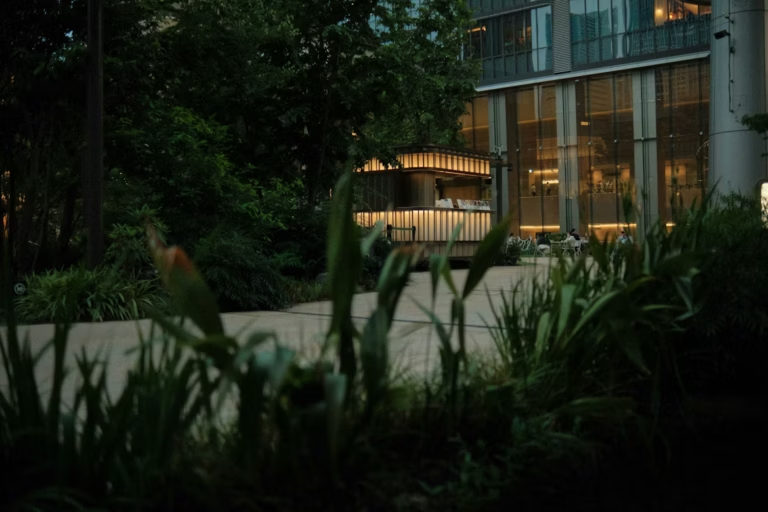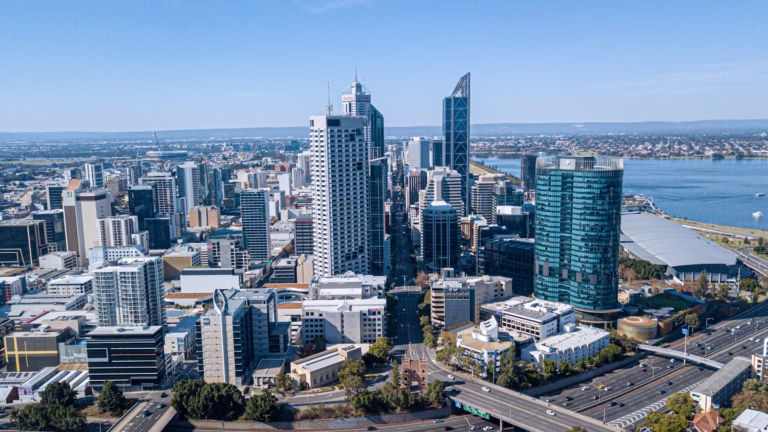The Protective Security Policy Framework (PSPF) is an essential component of Australia’s national security infrastructure. Developed by the Australian Government, the PSPF provides a structured framework to ensure that government agencies, contractors, and associated entities can effectively safeguard their people, information, and physical assets.
By setting out clear security principles and mandatory requirements, the PSPF helps organisations protect themselves against evolving threats, whether from malicious actors, internal negligence, or natural disasters.
While the PSPF covers a broad range of security measures—including information security and personnel security—this article focuses on the physical security aspects of the PSPF, which are crucial for protecting government facilities and sensitive areas. For organisations that work with the government, such as contractors and service providers, compliance with the PSPF is critical to ensuring ongoing partnerships and maintaining operational integrity.
At Smartsec Security Solutions, we specialise in physical security consulting and help organisations comply with the PSPF’s physical security requirements. Our focus is on providing expert advice on protecting buildings, managing access, and ensuring that physical security measures align with the framework’s stringent standards. As independent consultants, we provide unbiased, practical solutions without the pressure of selling security hardware.
What is the Protective Security Policy Framework (PSPF)?
The Protective Security Policy Framework (PSPF) is a set of guidelines and principles developed by the Australian Government to help agencies manage security risks. It provides a holistic approach to protecting government personnel, physical assets, and information from various security threats. The PSPF outlines mandatory security measures that must be followed by government departments and any private sector organisations that work with sensitive or classified government information or assets.
The PSPF has four key security outcomes:
- Governance: Establishing strong security governance to ensure that all security risks are managed effectively and that security policies are implemented consistently.
- Information Security: Protecting classified and sensitive information from unauthorised access, loss, or damage. This area focuses primarily on cybersecurity and data protection.
- Personnel Security: Ensuring that personnel are appropriately vetted and trained to handle sensitive information or access secure areas.
- Physical Security: Protecting physical environments, assets, and locations from unauthorised access, theft, sabotage, and other physical security threats.
Our expertise at Smartsec Security Solutions lies in helping organisations implement the physical security measures required by the PSPF, ensuring that facilities are secure from physical threats while adhering to government standards.
The Importance of PSPF Compliance
Government agencies and any businesses that manage sensitive government assets or information must comply with the PSPF to ensure the safety of their operations. Compliance with the PSPF is not only a regulatory requirement but also a crucial step in protecting assets from a wide range of potential security threats.
Key reasons why PSPF compliance is essential:
- Protection Against Physical Threats: The PSPF provides a structured approach to safeguarding government buildings and physical assets from unauthorised access, theft, or sabotage.
- Regulatory Compliance: Organisations that fail to comply with PSPF requirements may face legal and contractual penalties, particularly if they are contractors handling government projects.
- Reputation Management: For government agencies and businesses working with the government, maintaining a reputation for secure operations is critical. Non-compliance or security incidents can harm trust and reduce future opportunities.
- National Security: Many government assets and operations are tied to national security interests. Ensuring compliance with PSPF standards helps protect these critical assets from potential breaches.
Physical Security Requirements Under the Protective Security Policy Framework
The physical security component of the PSPF is designed to protect government facilities and assets from physical threats, such as unauthorised access, theft, vandalism, and sabotage. The physical security measures outlined in the PSPF ensure that sensitive areas are well-protected, and only authorised personnel can access secure spaces.
Here are the core physical security requirements under the PSPF:
1. Physical Security Risk Assessment
The first step in achieving PSPF compliance is conducting a thorough physical security risk assessment. This process involves identifying potential physical security threats to a facility, such as unauthorised entry, internal sabotage, or theft, and evaluating existing security measures.
- Identify Vulnerabilities: A risk assessment helps identify weaknesses in a facility’s security systems, such as insufficient access control, poorly placed surveillance cameras, or inadequate perimeter security.
- Assess Threat Levels: Each government facility will face different types and levels of threats depending on its location, size, and function. A risk assessment helps prioritise which areas need the most protection.
- Actionable Recommendations: Based on the findings, a risk assessment will offer detailed recommendations for enhancing physical security, such as upgrading surveillance systems, reinforcing access control, or installing additional security barriers.
2. Access Control
Access control is a critical element of the PSPF, ensuring that only authorised individuals can access secure or sensitive areas. Proper access control measures protect both the facility itself and any classified information stored or managed within it.
- Authorisation Systems: Implementing systems such as biometric scanners, keycards, or PIN-based access ensures that only personnel with the appropriate clearance levels can enter restricted areas.
- Visitor Management: The PSPF mandates that visitors to government facilities or contractors’ sites must be monitored closely, with detailed visitor logs and access restrictions in place to prevent unauthorised entry.
- Segregation of Access: Access to different parts of a facility should be granted based on the roles and responsibilities of personnel, ensuring that only those with a legitimate need can enter secure areas.
3. Surveillance and Monitoring Systems
Surveillance systems are essential for monitoring activities in and around a facility, deterring unauthorised access, and capturing evidence in the event of a security breach. The PSPF outlines the need for robust CCTV and monitoring systems to be installed at key locations throughout government buildings.
- CCTV Camera Placement: Cameras should be positioned to cover all entrances, exits, and critical areas, including sensitive offices, storage rooms, and perimeter boundaries. Proper camera placement ensures that there are no blind spots where unauthorised activities could occur unnoticed.
- Monitoring and Recording: The PSPF recommends continuous monitoring and recording of surveillance footage, which should be stored securely for review if a security incident occurs.
- Integration with Other Systems: Surveillance systems should be integrated with access control and alarm systems to provide a coordinated response to potential breaches.
4. Perimeter Security
Perimeter security is another vital element of physical security under the PSPF. It is designed to prevent unauthorised individuals from gaining access to secure facilities or areas by placing physical barriers and monitoring systems around the property.
- Fencing and Gates: Government buildings should have secure fencing and gates to control who can enter and leave the premises. These barriers prevent unauthorised entry and are often equipped with access control systems for further security.
- Security Lighting: Adequate lighting is necessary to ensure that outdoor areas, particularly around entrances and exits, are well-lit to deter criminal activity and improve visibility for surveillance cameras.
- Vehicle Barriers: For facilities where vehicle access is a concern, the PSPF recommends installing bollards, roadblocks, or other vehicle barriers to prevent unauthorised vehicles from entering restricted areas.
5. Intrusion Detection and Alarm Systems
To comply with the PSPF’s physical security requirements, government facilities must be equipped with intrusion detection and alarm systems that provide real-time alerts in the event of a security breach.
- Motion Sensors and Alarms: Motion detectors, door/window alarms, and other security sensors should be installed in high-risk areas to detect unauthorised access and trigger alarms when necessary.
- Immediate Response Protocols: The PSPF mandates that security breaches should be addressed quickly. Alarm systems should be connected to security personnel or local authorities, ensuring that incidents are managed swiftly and effectively.
How We Can Help with PSPF Physical Security Compliance
At Smartsec Security Solutions, we specialise in PSPF physical security consulting, helping government agencies and contractors meet the stringent physical security requirements of the PSPF. Our consulting services focus solely on the physical security aspect of the PSPF—without covering cybersecurity—ensuring that your facilities are properly protected from physical threats.
Our services include:
- Physical Security Risk Assessments: We conduct thorough risk assessments to identify vulnerabilities and provide tailored recommendations for improving security.
- Access Control Systems: We help design and implement advanced access control solutions, ensuring that only authorised personnel can access secure areas.
- Surveillance Systems: Our team assists with the design and placement of CCTV cameras and other monitoring systems to ensure comprehensive coverage of your facility.
- Perimeter and Intrusion Detection Systems: We provide advice on the installation of fencing, gates, barriers, and intrusion detection systems to secure your property’s perimeter.
- Compliance Audits: We help organisations maintain ongoing compliance with the PSPF by conducting regular audits and recommending upgrades as needed.
Why Choose Smartsec Security Solutions?
At Smartsec Security Solutions, we are committed to providing independent, unbiased advice on PSPF physical security compliance. Unlike many security firms, we don’t sell or install hardware, meaning our recommendations are based solely on what’s best for your organisation.
Our team of experienced consultants is here to help you develop and implement a robust physical security plan that aligns with PSPF guidelines and protects your assets, people, and operations.
Feel Free to Reach Out
If you’re looking for expert guidance on PSPF physical security compliance, contact Smartsec Security Solutions today. Our team of experienced consultants is ready to assess your security needs and provide tailored solutions to ensure your organisation is fully protected.
Visit our Services page to learn more about how we can help you achieve PSPF compliance and build a secure future.



